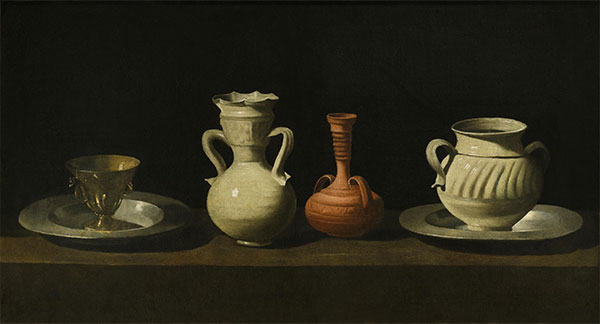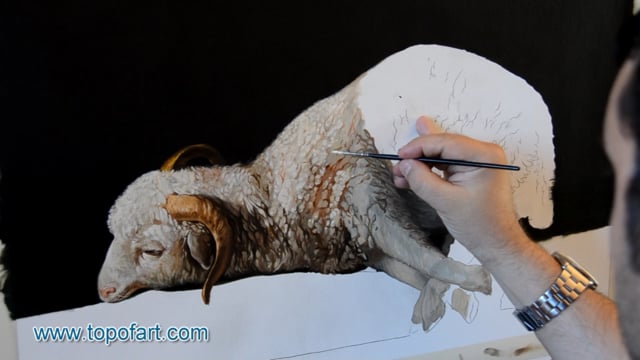Still Life with Vessels, c.1650 Francisco de Zurbaran (1598-1664)
Location: Prado Museum Madrid SpainOriginal Size: 46 x 84 cm


Recreating Zurbaran: A Video Journey into Museum-Quality Reproductions by TOPofART
Video showcasing the process of hand-painting a Zurbaran masterpiece with the utmost precision and care for detail.
Oil Painting Reproduction
If you want a different size than the offered
Description
Painted by European Аrtists with Academic Education
Museum Quality
+ 4 cm (1.6") Margins for Stretching
Creation Time: 8-9 Weeks
Creation Process
We create our paintings with museum quality and covering the highest academic standards. Once we get your order, it will be entirely hand-painted with oil on canvas. All the materials we use are the highest level, being totally artist graded painting materials and linen canvas.
We will add 1.6" (4 cm) additional blank canvas all over the painting for stretching.
High quality and detailing in every inch are time consuming. The reproduction of Francisco de Zurbaran also needs time to dry in order to be completely ready for shipping, as this is crucial to not be damaged during transportation.
Based on the size, level of detail and complexity we need 8-9 weeks to complete the process.
In case the delivery date needs to be extended in time, or we are overloaded with requests, there will be an email sent to you sharing the new timelines of production and delivery.
TOPofART wants to remind you to keep patient, in order to get you the highest quality, being our mission to fulfill your expectations.
We not stretch and frame our oil paintings due to several reasons:
Painting reproduction is a high quality expensive product, which we cannot risk to damage by sending it being stretched.
Also, there are postal restrictions, regarding the size of the shipment.
Additionally, due to the dimensions of the stretched canvas, the shipment price may exceed the price of the product itself.
You can stretch and frame your painting in your local frame-shop.
Delivery
Once the painting Still Life with Vessels is ready and dry, it will be shipped to your delivery address. The canvas will be rolled-up in a secure postal tube.
We offer free shipping as well as paid express transportation services.
After adding your artwork to the shopping cart, you will be able to check the delivery price using the Estimate Shipping and Tax tool.
Museum Quality
The paintings we create are only of museum quality. Our academy graduated artists will never allow a compromise in the quality and detail of the ordered painting. TOPofART do not work, and will never allow ourselves to work with low quality studios from the Far East. We are based in Europe, and quality is our highest priority.
1 Reviews
5.00 Overall rating
Like other still-lifes of Zurbaran which are also signed, this painting is first of all an authentic re-interpretation of Caravaggio in one fundamental aspect: the voluntary adoption of a 15th-century mode. The four objects (which are found again in other still-lifes by the artist) are placed on a continuous plane that is fixed between two vertical planes - foreground and back ground - with an extreme reduction of space.
The vase and the dishes share the same 'pure' volumetric quality, and their composition on the plane corresponds to an equally strict geometry, the lines of which can be obtained by drawing a plan of this picture as if it were an architectural elevation. The dishes on the sides are disposed in strict symmetry, as are their shadows.
In the centre, the left double-handled vase is aligned along the axis of the dishes, while the one to the right is pushed back and placed at an angle whose diagonal, projected towards the spectator, is marked by the handles. Another oblique direction is marked by the handles of the vase to the right. At the same time there is a delicate, suspended rhythm of balances in the alternation of heights and sizes of the equidistant objects. Mechanical symmetry is avoided and the image is animated by an internal, almost breathing rhythm.
Beneath an apparent simplicity, the artist shows all the depth and awareness of compositional structure, while the unity of the lateral light isolates the forms in an immobility of contemplation that is continually renewed.